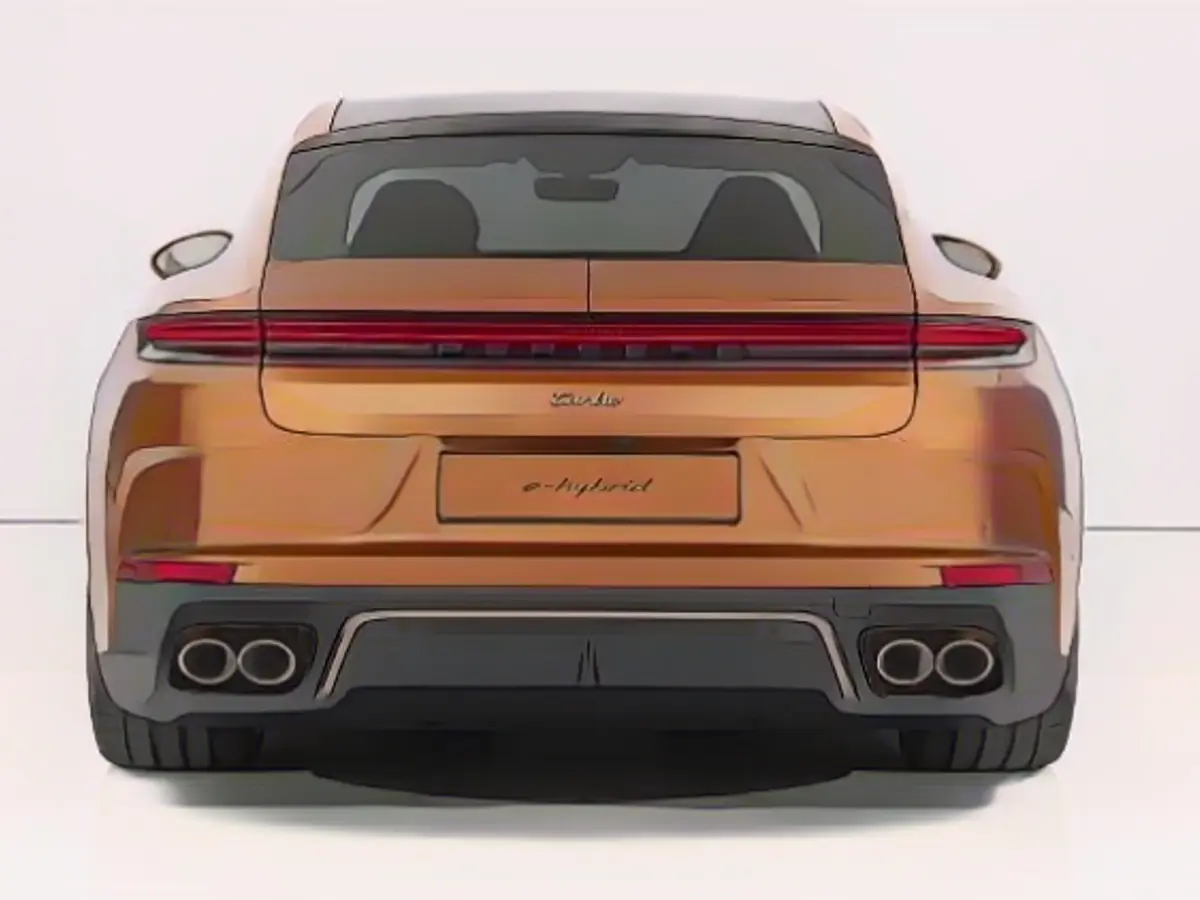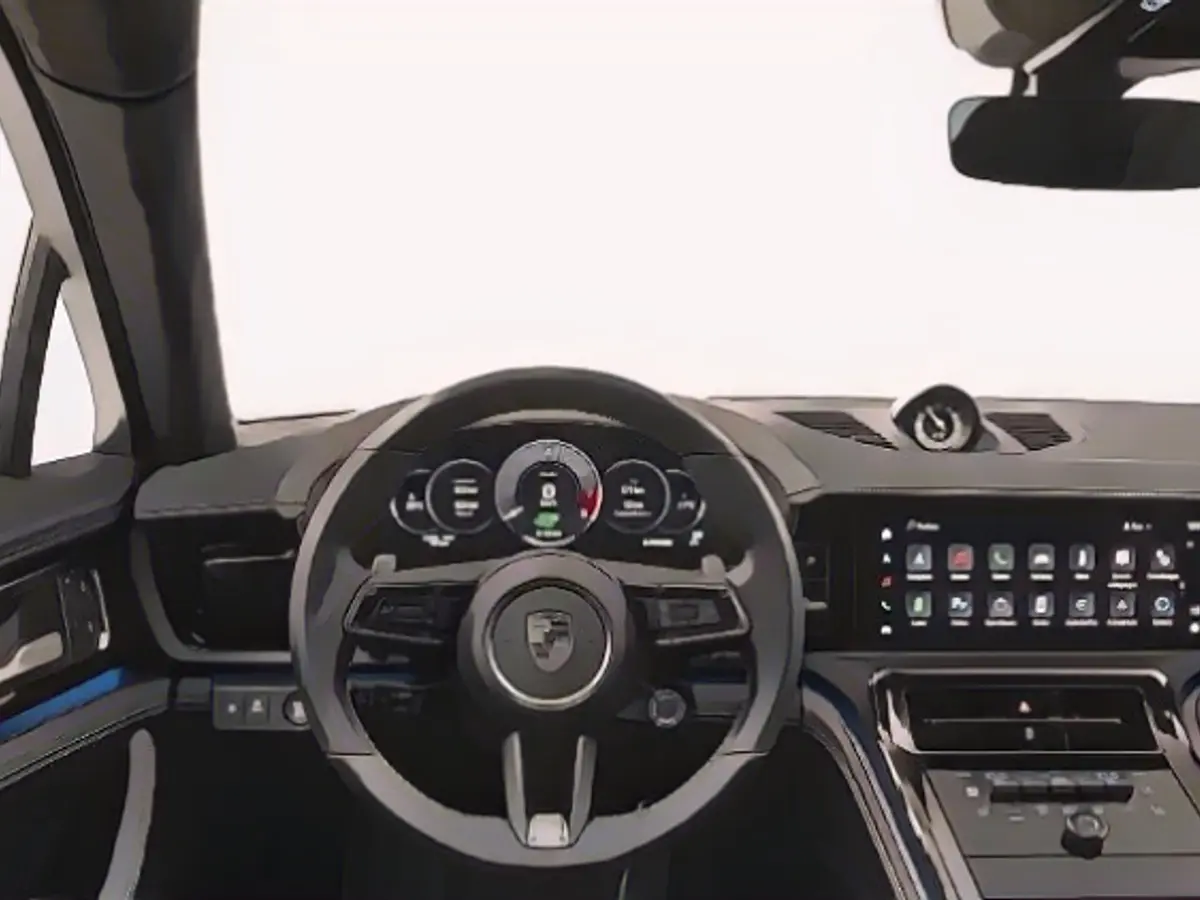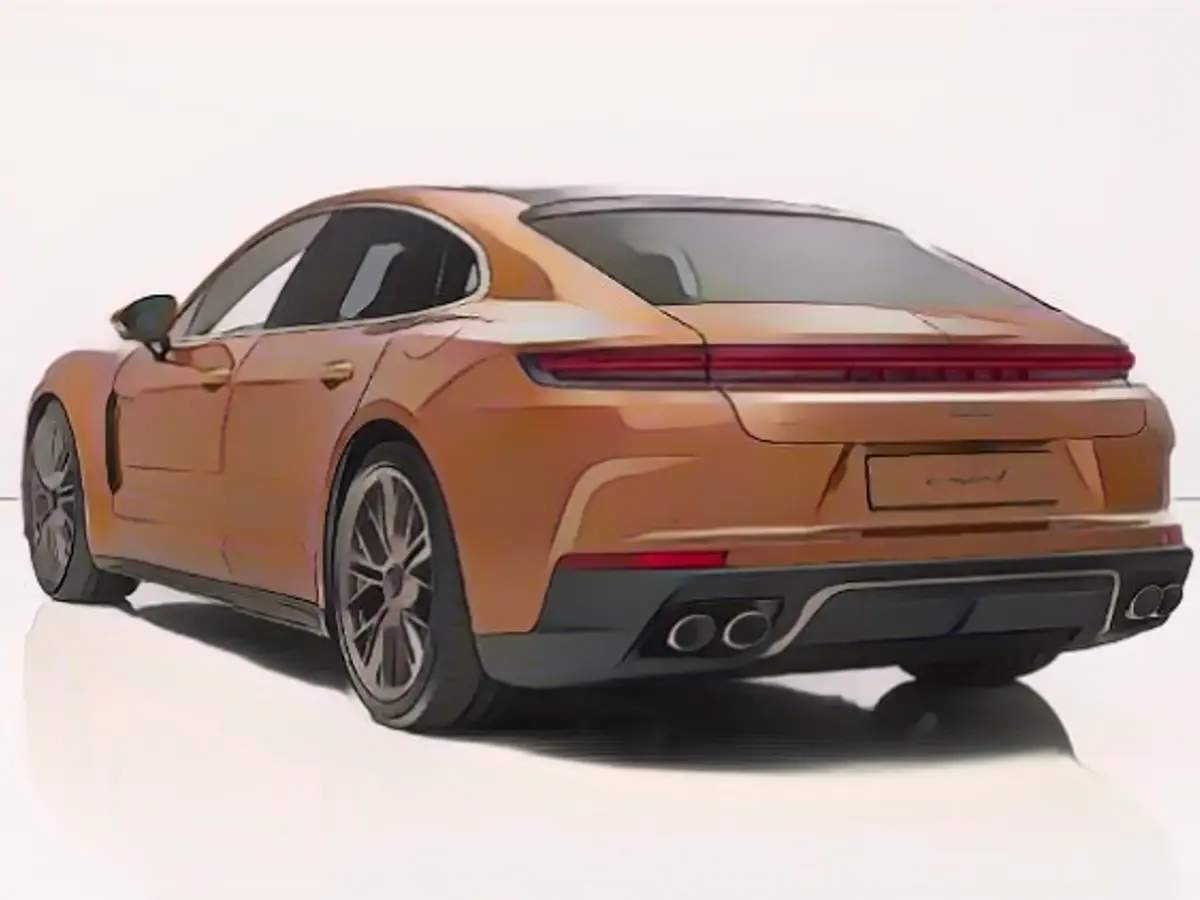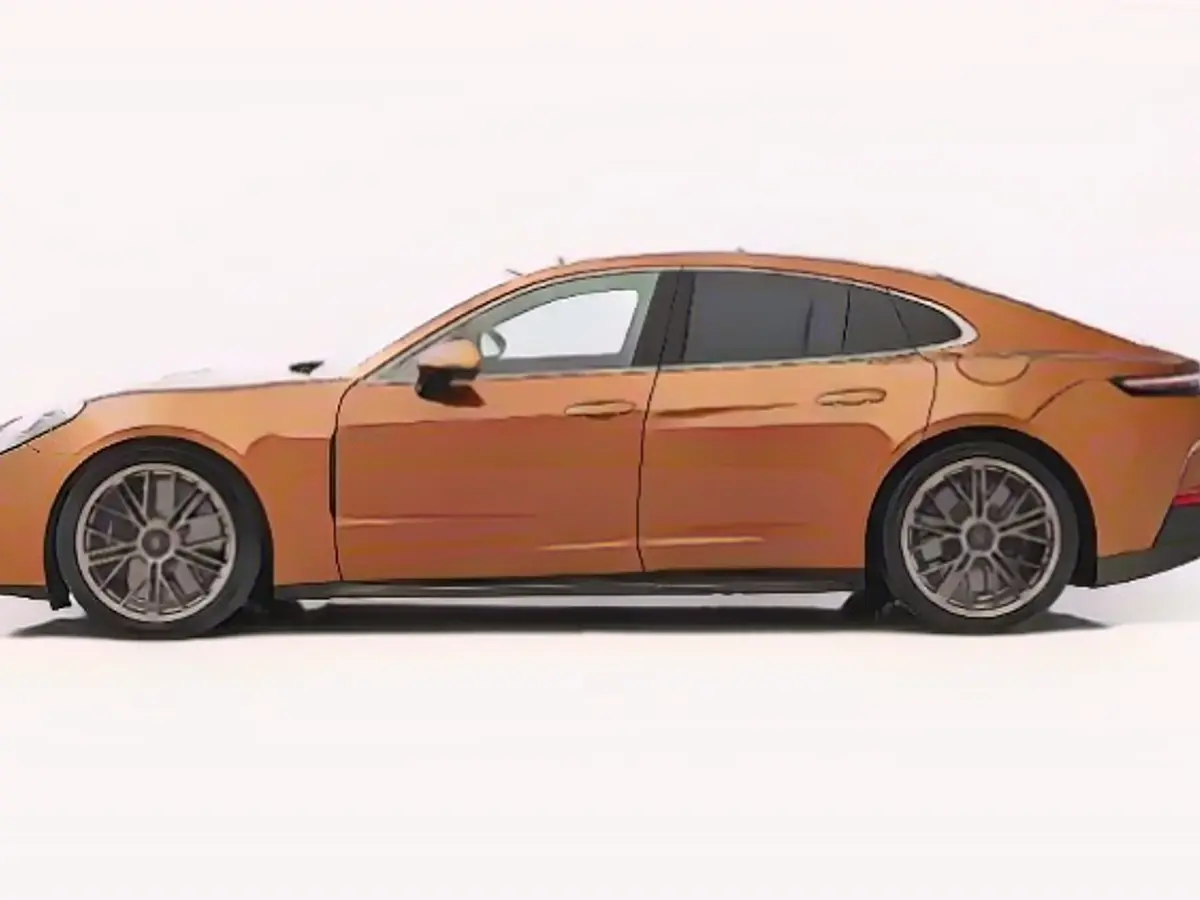Porsche Panamera - luxury class barely grows and keeps V8
Porsche is announcing the third generation of the Panamera and making a statement to fans of classic automobility with combustion engines under the hood. But it will also be a bit electric. ntv.de has inspected the new model.
As I approach the all-new Panamera for the first time, I have to wonder: really? This is the new model? I have trouble identifying the third-generation Panamera, then the neighbors of potential new customers do too, and that's a good thing. Envy and all that. Even the dimensions remain largely the same with an exterior length of 5.05 or 5.20 meters ("Executive" with long wheelbase).

But to deny Porsche the necessity of the new model would be a bit mean. However, when you sit in the car, the difference is clearly noticeable. After all, Porsche wouldn't be Porsche if the Panamera didn't now also have the elegantly curved display (classic with rev counter in the middle). Oh yes, and the optional passenger monitor (almost eleven inches) is of course also available - the co-driver shouldn't get bored. Not only can he reprimand the driver if he is driving too fast (the performance data can be displayed here in minute detail), but he can also play videos while driving, which remain hidden from the driver due to the different viewing angle.

And the luxury sedan remains a fine haven of automotive bliss. Whether it's the graceful leather seats with optional double topstitching in a bold color for fans of finely crafted stitching or decorative ornaments. Overall, the interior makes a clean impression - no wonder, as the physical buttons are limited to just five for controlling the air conditioning and a rotary control. However, Porsche saves one mechanical analog display for the next Panamera era: the Sport Chrono unit on the center console. To complete the impression of orderly architecture, the automatic selector lever has been moved behind the steering wheel, where it has also proven its worth in other models.
I'll refrain from speculating whether the newly unveiled Panamera could be the last in any respect. Let's just enjoy the present and be surprised by what may or may not come in a few years' time. And now there is a desirable saloon (of course you can also think this Zuffenhausen car is stupid) with six and fortunately (some say so, others say so) also eight-cylinder engines under the hood.
Most Panamera versions come as hybrids

The pure combustion engine, on the other hand, remains a minority offering, if you like. It comes in the form of a twin-turbocharged V6 engine with a displacement of 2.9 liters and 353 hp (all-wheel and rear-wheel drive), as already known from the Cayenne. The remaining four variants, on the other hand, are powerfully hybridized. At the center of the PHEV line in all versions is the 190 hp electric motor, whose energy hunger is fed by a battery of around 26 kWh. This enables the Stuttgart model to drive around 90 kilometers purely electrically - a decent figure with high suitability for everyday use. Porsche has deliberately dispensed with the option of fast charging with direct current, stating that this is not a common application anyway. With eleven kilowatts of charging power, it takes around three hours to fill the battery.
So far, Porsche has failed to provide the performance figures for most hybrids, with the exception of the new V8 powertrain, where the "S" is explicitly missing. Here there is 680 hp system output and 930 Newton meters of torque. The remaining expansion stages can be derived from the Cayenne - so that could be 470 and 519 hp for the two six-cylinder engines (we should know more details soon).
Porsche is still being a little secretive about a possible top model with the "S". After all, the Turbo E-Hybrid (i.e. without the "S") of the Cayenne already has 739 hp - will Porsche go beyond this with a potential top-of-the-range version, which has not been denied by those responsible? The provisional top-of-the-range version certainly has nothing to hide, with 3.2 seconds for the standard sprint (from 0 to 100 km/h) and a top speed of 315 km/h. However, the base model is not exactly phlegmatic at 5.1 seconds either and tops out at 270 km/h.
Only the finest chassis gadgets

There are a few more innovations hidden under the bodywork. Porsche is proud of the modified air suspension. Not only is there the so-called two-chamber, two-valve air suspension with separately adjustable compression and rebound damping (which increases the range between comfortable and sporty tuning) familiar from the Cayenne - in the SUV it also performs quite well, especially on short road bumps.
For the first time, there is also an active function with one hydraulic pump per wheel, which is only available for the PHEV models. This should enable the Panamera to compensate for pitching and rolling movements much more precisely and effectively in future. Porsche promises to use the system in such a way that bumps are completely absorbed. Naturally, ntv.de will soon be keeping tabs on this big announcement.

Incidentally, digital natives can also expect a treat or two. For example, the Panamera shows a QR code on the display to make it easier to register the smartphone with the Porsche ID. And with Apple CarPlay, for example, ambient lighting, climate functions and even the seat massage can be controlled via Siri. The phone continues to be charged inductively. And because this technology has so far only produced a lot of heat but brought little power to the device, the system will have a cooling system in future. Upgraded headlights now have HD matrix units with 32,000 pixels to enable new lighting functions. Porsche is talking about a lighting range of 600 meters. And to top it all off, the Panamera can now be maneuvered into parking spaces from the outside using a smartphone app, without a driver having to sit behind the wheel.
The new Porsche Panamera is now available to order and will be rolling out to customers from March 2024. This time, however, it will remain the saloon in the two wheelbase versions - Porsche apparently sees no economic basis for further derivatives, so the previous Sport Turismo is history. Porsche will sell most of the Panamera in China, where 50 percent will probably be the long-wheelbase version. In this country, the luxury class model will remain rather exotic, but a fine alternative to the rest of the luxury class range.
Despite the focus on traditional combustion engines, Porsche is also showcasing its commitment to electromobility with the new Panamera. The automaker is offering several Porsche models that are electrified, including the new Panamera itself.
The new Porsche Panamera joins the ranks of other Porsche models that are embracing electromobility, offering customers a mix of classic automobility and innovative technologies. In fact, most of the Panamera versions will come as hybrids, demonstrating Porsche's dedication to sustainable and efficient driving.
Source: www.ntv.de








